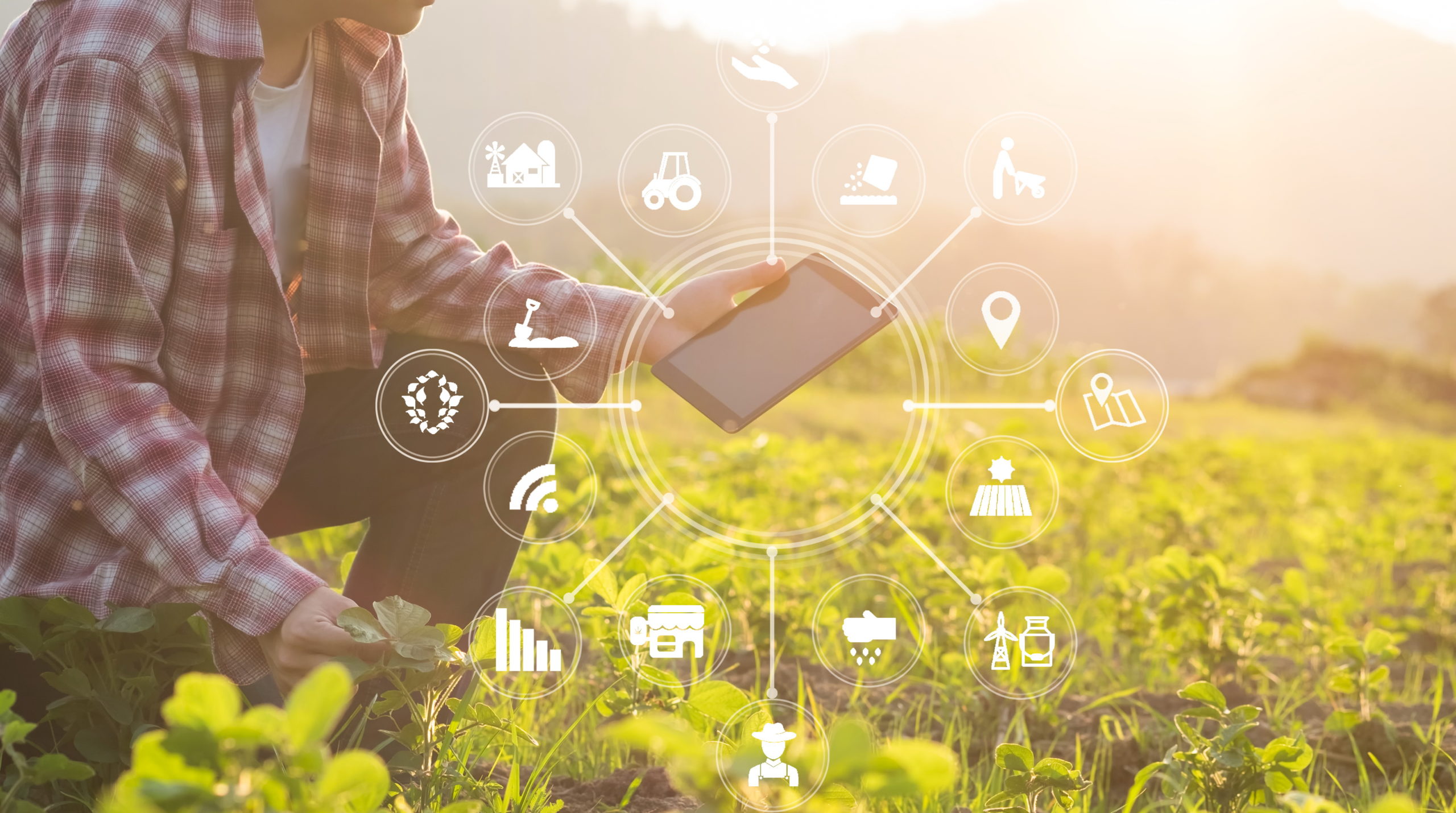CAP, European Green Deal and the Digital Transformation of Agriculture | Gianluca Brunori
*The article was originally published on the website of ARC2020 and republished here to increase coverage.
The European Green Deal places great importance on the role of digitalisation for ecological transition and sustainable growth. CAP too has much to say about digitalisation. However, as Gianluca Brunori argues, we need to understand that digitalisation is a process of social transformation, which takes place both as an effect and as a driver of technological change. A careful analysis of needs, opportunities, and threats including at the local level will add the necessary nuance for appropriate digitalisation.
1. Introduction
As stated by the European Green Deal, the European Union attributes digitalisation a central role in the ecological transition and sustainable growth. In the proposal for a regulation for the reform of the Common Agricultural Policy, digitalisation is present in the general objectives (Article 5), in the specific objectives (Article 6), in the chapter on knowledge systems in agriculture (Article 13) and the chapter on agricultural modernization (Art. 102).
If we look at past CAP reforms, there is a genuine concern that the lofty idea of digitalisation could simply end up as a mere method to rapidly replace agricultural machinery. To generate more significant impacts in line with the EU Green Deal, it is worth remembering that, in the first instance, digitalisation is a process of social transformation, which takes place both as an effect and as a driver of technological change[1]. A careful analysis of needs, opportunities, and threats will therefore be necessary. Carrying out this analysis at the local level will favour the identification of priorities, which may be different for different products and social contexts.
Opportunities and risks of digitalisation
The opportunities that digitalisation offers are well-known: in the agricultural field, digitalisation can make production processes more efficient, by reducing production costs and resource consumption. Digitalisation can also: replace the most difficult or painful tasks of human labour; reduce the impact of adversities (e.g. pests, diseases) through improved predictive capacity; facilitate the integration of companies into the market; foster learning processes and the development of bottom-up innovation.
Some of the threats are well known, especially for the individuals, the groups and the regions that are left behind. Other threats are less known. The design of technologies, for example, reflecting production models far from local contexts, may encourage the adoption of inappropriate production and business models. Skill barriers or uncertain benefits could discourage rural actors from adoption; opaque information may generate the wrong technological choices; poor communication between subsystems (for example, between hardware and software or between different tools) may bring to technological bottlenecks.
A poorly governed digital transformation could not meet initial expectations and may have unexpected social and economic consequences. It has been observed, for example, that improvements in the farm-level efficiency of irrigation can lead to the expansion of the irrigated areas, ending in an overall increase in the consumption of the resource[2]. Reducing fertilisers and pesticides by a few percentage points may not be enough to bring high-impact production systems back to a sustainable level of impact[3]. And the potential increase in productivity linked to automation may bring to spatial and social disruption in some production systems, for example the replacement of outdoor horticulture with indoor ‘vertical’, urban horticulture[4].
Strategies for digitalisation
Clear and coherent multi-level strategies for digitalisation are therefore all the more necessary. How should these strategies be shaped? First of all, it should be recognised that there are many possible digitalisation pathways. As several observers have pointed out, there are unsustainable production models that cannot become sustainable just as a result of digitalisation[5], and in some cases, digitalisation could support or even help create unsustainable production systems.
In coherence with the Green Deal and the Sustainable Development Goals, digitalisation should be linked to ecological transition, as an opportunity to radically rethink unsustainable production models, to improve farmers’ ability to manage diversity, to facilitate coordination between manufacturers, to improve communication with partners and customers, to improve the quality of products and to reduce waste.
To this purpose, digitalisation strategies should specify the conditions necessary for digitisation to take place in a given region. The necessary effort to develop basic, advanced and specialist digital skills cannot be obtained without joint programs of coordination between education and training bodies at all levels. An outstanding organisational effort is needed to develop digital ecosystems made of integrated databases, platforms for access to services, application systems suitable for the conditions in which farmers operate, technological standards that can facilitate the choice of the most appropriate solutions, interfaces suitable for users’ lifestyles and work. Advisory bodies will need to rethink their structures and redesign their services, many of which will go digital. Integrated platform managers will be the emerging players in the knowledge system.
The role of technology brokers, able to communicate with each other sensor manufacturers, software developers, business solution experts, drone operators and data management specialists will become central. The market alone won’t be able to create these ecosystems everywhere: appropriate governance patterns and capacity to orchestrate these processes will be needed. Moreover, it will be necessary to establish a legal framework capable of distributing data ownership rights and the benefits of sharing them fairly.
Policy on digitalisation and digitalisation of policy
The challenge of digitalisation does not only concern agricultural enterprises and rural communities. The performance-based model that the new CAP will introduce underlines the centrality of data in the policy cycle, and require detailed performance indicators, timely monitoring systems, effective evaluation mechanisms. The administrative aspects of implementation could undergo a revolution, long-awaited by farmers exasperated by bureaucracy.
However, it is difficult to think of a performance-based model that does not include the farm as a component of a digital ecosystem, communicating with the public administration continuously and two-way, exchanging paperless data related to both the administrative aspects and biophysical parameters. The challenge is considerable because it implies a radical rethinking of the operating mechanisms of the administrative apparatus, the interfaces between beneficiaries and the administrative bodies, the balance of rights and duties. It is also a question of creating trust between the farm and the administrative bodies, which encourages data sharing and prevents surveillance which could result in disproportionate penalties, damage to farmers’ reputation or fraudulent use of information[6].
For sustainable digitalisation pathways
The objectives of the new CAP and its implementation model lay the foundations for the principles of sustainable digitalisation: a process of socio-technical transformation that reduces economic and gender inequalities, reduces the pressure on resources, improves workers’ conditions, improves farmers’ incomes, and encourages grassroots innovation. To achieve it, it will be necessary to create the basic infrastructure conditions, adapt the technical-organisational solutions to the different contexts, actively promote digital inclusion, orchestrate the development of digital ecosystems and promote new governance models. Sustainable digitalisation will allow the design of transformative, data-driven intervention schemes that stimulate learning processes both by farmers and by public administrations. For the scientific community and the operators in the sector, a new phase is opened, the contours of which are still largely to be drawn.
References
[1] Kelly Rijswijk, Ellen Bulten, Laurens Klerkx, Joost Dessein, Lies Debruyne, Gianluca Brunori, Ivano Scotti, Manlio Bacco, Margaret Currie, Fabio Bartolini, Daniël Van Der Velden, Silvia Rolandi, Matteo Metta (2020) Digital Transformation Of Agriculture, Forestry And Rural Areas: Developing A Futureproof Socio-Cyber-Physical System. DESIRA deliverable n. 1
[2] Perry C., Steduto P. 2017. Does Improved Irrigation Technology Save Water? A Review Of The Evidence. Food And Agriculture Organization Of The United Nations Cairo, 2017. Isbn 978-92-5-109774-8.
[3] Andrea Beste (2021) Precision Farming – or “The Emperor’s New Clothes”?
[4] Rod Nickel (2021) Investors seed indoor farms as pandemic disrupts food supplies
[5] Basso, B., & Antle, J. (2020). Digital agriculture to design sustainable agricultural systems. Nature Sustainability, 3(4), 254-256.
[6] OECD (2019), Digital Opportunities for Better Agricultural Policies, OECD Publishing, Paris.


